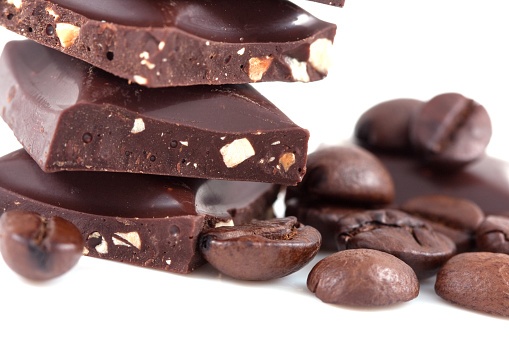 Pumpkin season is officially here, and I am SO excited! Call me “basic”—you would not be wrong. Starbucks has launched their pumpkin drinks. Food bloggers, including myself, are basically turning their kitchens into giant pumpkins. It is a whole thing.
Pumpkin season is officially here, and I am SO excited! Call me “basic”—you would not be wrong. Starbucks has launched their pumpkin drinks. Food bloggers, including myself, are basically turning their kitchens into giant pumpkins. It is a whole thing.
Here is my hiccup with pumpkin season and all the yummy beverages: THEY ARE FULL OF SUGAR AND CALORIES. Basically, we drink this little serving that takes up a huge portion of our daily calories yet contributes very little to improving our satiety. When you combine no fiber, little protein, and minimal volume you get “hangry” feelings and a higher risk of overeating later in the day. This makes weight-loss attempts and health goals harder to accomplish.
Now, don’t get me wrong—I am one who believes all foods and beverages can fit into a healthy nutrition regimen, even the high-sugar drink from time to time. However, I also believe in finding alternatives that are lower in sugar and calories when possible. Don't worry, these “alternatives” I speak of MUST taste yummy or else I would just stick with having the “real deal” in moderation.
Here are 8 DELICIOUS Starbucks Pumpkin Spice drink orders that won’t take up the bulk of your calorie budget and are low in sugars.
Hot Options
Pumpkin Spice “Latte”
Order: Grande blonde coffee with 1 pump pumpkin sauce, 2 pumps sugar-free vanilla, 2 shots espresso, and 1 cup steamed almond milk (or about half-full of steamed skim milk)
Nutrition Facts: 95 calories, 14g carbs (9g sugar), 4g fat, 3g protein
Pumpkin Spice Americano
Order: Grande blonde caffe Americano with 1 pump pumpkin sauce, 2 pumps sugar-free vanilla, and light splash of half & half. Ask to put in a venti cup to allow room for the add-ins.
Nutrition Facts: 75 calories, 12g carbs (7g sugar), 2g protein, 3g fat, 255mg caffeine
Pumpkin Chai Tea “Latte”
Order: 1 venti brewed chai tea. Add steamed skim milk, 4 Splendas, and 1 pump pumpkin sauce
Nutrition Facts: 65 calories, 12g carbs (12g sugar), 4g protein, 0g fat
Pumpkin Spice Coffee
Order: Grande blonde coffee with 1 pump pumpkin sauce, 2 pumps sugar-free vanilla, and light splash of half & half. You can add Splenda for a little sweeter taste with no additional calories.
Nutrition Facts: 65 calories, 9g carbs (7g sugar), 2g protein, 3g fat
Cold Options
Iced Pumpkin Spice Latte
Order: Grande iced coffee with no classic syrup. Add 1 pump pumpkin sauce, 2 pumps sugar-free vanilla, 2 shots espresso, and 1 cup steamed almond milk (or about ½ full of steamed skim milk)
Nutrition Facts: 95 calories, 14g carbs (9g sugar), 4g fat, 3g protein
Iced Pumpkin Cinnamon Coffee
Order: Grande iced coffee with no classic syrup. Add 1 pump pumpkin sauce, 2 pumps sugar-free vanilla, and a light splash of half & half.
Nutrition Facts: 65 calories, 9g carbs (7g sugar), 2g protein, 3g fat
Pumpkin Cold Brew with Cinnamon Almondmilk Foam
Order: Grande Cold Brew with Cinnamon Almondmilk foam. Add 1 pump pumpkin sauce and 1 pump sugar-free cinnamon dolce syrup.
Nutrition Facts: 65 calories, 14g carbs (12g sugar), 1g protein, 1g fat
Pumpkin Cold Brew with Dark Cocoa Almondmilk foam
Order: Grande Cold Brew with Dark Cocoa Almondmilk foam. Add 1 pump pumpkin sauce and 1 pump sugar-free vanilla syrup.
Nutrition Facts: 65 calories, 13g carbs (10g sugar), 1g protein, 2g fat
Extra Hacks
Want more pumpkin? You can certainly add another pump of the pumpkin sauce. One pump of the pumpkin sauce is an additional 25 calories, 6g carbs (6g sugar), 0g fat, and 0g protein.
Want more sweetness? You can add a packet or two of Splenda for a noncaloric sweetener. No, this will not cause cancer. Research does not support that claim. So, if you want Splenda to help sweeten your beverage, add it.
Want more cream? Have them add a creamy milk, such as oat milk or almond milk. Both are fairly low calorie. Skim milk is great and offers more protein, but it is not as creamy.
Those are my tricks. And if you’re still hungry for pumpkin and that other fall treat, apples, check out these recipes. I hope you enjoy these drinks and ultimately have a great PUMPKIN SEASON while still reaching your health goals! Enjoy!
This blog was written by Sabrina Goshen, NIFS Registered Dietitian. To learn more about the NIFS bloggers, click here.


 Like most people, I’m busy: full-time job, kids, a house… and in my “spare time,” I’m a high school tennis coach and play a lot of tennis. A few years back I started having issues with exhaustion (go figure). Right around 4pm I would just be overcome with complete, hit-the-couch, exhaustion. The only way to make it through the rest of my busy day seemed to be one more caffeinated drink.
Like most people, I’m busy: full-time job, kids, a house… and in my “spare time,” I’m a high school tennis coach and play a lot of tennis. A few years back I started having issues with exhaustion (go figure). Right around 4pm I would just be overcome with complete, hit-the-couch, exhaustion. The only way to make it through the rest of my busy day seemed to be one more caffeinated drink.